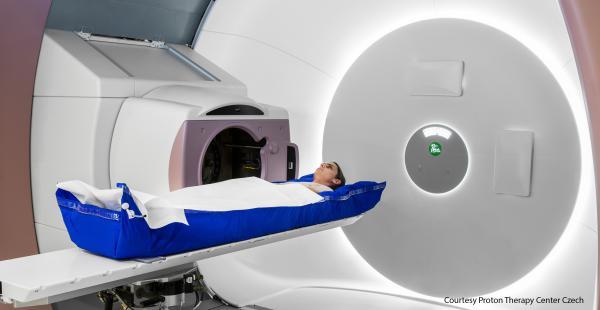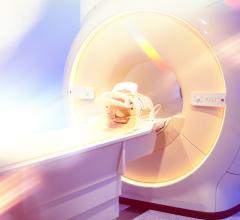
May 8, 2015 — IBA (Ion Beam Applications S.A., EURONEXT) announced the first clinical use of its Proteus Plus Universal Beam Triggering Interface (UBTI), a new application in the administration of proton therapy. This interface can connect up to four different patient position monitoring and respiratory management systems to the IBA proton therapy system. The Proton Therapy Center Czech, Prague, Czech Republic, treated a patient using the Qfix breathing control equipment Dyn’R SDXTM connected to UBTI for automatic control of the proton beam according to the tumor motion. As respiratory management systems guide the proton beam more precisely to the tumor, they help leverage the inherent strengths of proton therapy.
Motion management strategies make it possible to decrease treatment margins so the dose to the tumor can be raised while potential toxicity to vital organs is reduced. UBTI can exchange information between the IBA proton system and up to four different motion management systems in order to automatically hold and resume proton as well as X-ray beam irradiation in conjunction with monitored patient parameters, with very low latency. This automated regulation of beam-on/beam-off periods eliminates the burden of manual irradiation pause and resume, increasing performance and safety of treatments.
Integration with UBTI has already been validated for two respiratory management systems: Dyn’R SDXTM and Vision RT gateRT. Both support voluntary breath hold and free-breathing techniques — SDXTM by measuring pulmonary air volume, and gateRT by monitoring skin surface. They are fully compatible with IBA treatment delivery modalities, as beam hold-and-resume is synchronized with delivery cycles so that multiple interrupts do not affect uniformity (in double or uniform scattering) or conformity (in pencil beam scanning) of dose distribution. C-rad has developed an IBA proton system compatible catalyst as well, and others are to follow.
The Proton Therapy Center Czech opted for UBTI-driven assistance of SDXTM with deep inspiration breath hold (DIBH) to support its clinical protocol. Using a spirometer, the SDXTM monitoring device permits beam irradiation when the pulmonary volume reaches a specified level, previously calculated during patient training, and ceases when the patient relaxes his breath hold. Thoracic and abdominal tumor motion can thus be managed during radiotherapy.
Clinicians selected a 48 year-old female with Hodgkin’s lymphoma as the first to receive treatment with UBTI-driven assistance of SDXTM with DIBH. This specific diagnosis was chosen because it affects relatively young patients and leaves them free of respiratory problems, contrary to those with diseases like lung cancer. Treatment was divided into 15 fractions, with a target volume that covers the whole mediastinum and neck nodules. The treatment plan consists of just one field counting about 10 layers, which takes only a few minutes per fraction, each fraction requiring 5 to 7 inspirations from the patient. Computed tomography (CT) imaging and patient alignment are also performed using Dyn’R SDXTM.
Ji?í Kubeš, M.D., Ph.D., medical director of Proton Therapy Center Czech, said: “Integrating a breathing control device into proton therapy is a huge step for our center. Because the preciseness of dose delivery onto the target volume is highly crucial, mandating little or no internal organ motion, we previously had to exclude treating several indications situated in the mediastinum. Now, thanks to the integration of the SDX breathing control device, proton therapy comes within reach of new patient populations that could not be considered for treatment at our center until today.”
For more information: www.iba-worldwide.com


 March 28, 2024
March 28, 2024 








